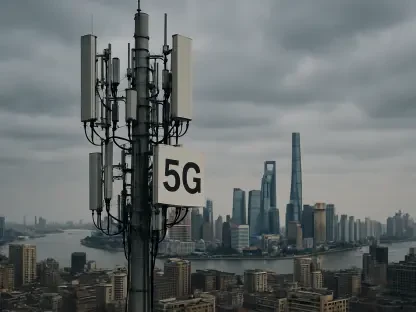In a rapidly evolving technological landscape, Matilda Bailey stands out as a networking specialist deeply engaged with the cutting-edge advancements in quantum computing and networking. Her insights offer a glimpse into the transformative potential these technologies hold. Through her expertise, we delve into the milestones set by industry leaders like Cisco and explore the intricate dynamics of their innovations.
Can you explain Cisco’s recent milestones in quantum networking technology?
Cisco has made significant strides by unveiling a quantum network entanglement chip aimed at scaling quantum processors for practical use. They’ve also established the Cisco Quantum Labs, a facility dedicated to advancing quantum networking technologies. These initiatives are pivotal as they could potentially bring practical quantum computing much sooner than anticipated.
What motivated Cisco to focus on quantum computing and networking technologies?
The motivation stems largely from the inherent challenges in scaling current quantum processors, which are vital for the advanced applications we foresee. By investing early in quantum networking, Cisco positions itself to be at the forefront of integrating quantum capabilities with existing systems, seeing parallels with past advancements in classical computing.
How does the quantum network entanglement chip contribute to the scalability of quantum networks?
The chip facilitates the connection of quantum processors through entangled photons, enabling instantaneous connections regardless of distance. This capability is crucial for developing distributed quantum computing systems, akin to how classical data centers evolved through networking smaller nodes.
What are the specific features and advantages of the quantum network entanglement chip?
One of the standout features is its operation on standard telecom wavelengths, which means it can seamlessly integrate with existing fiber optic infrastructure. Additionally, its room-temperature operation as a photonic integrated circuit supports scalable deployment, offering high performance with minimal energy use.
How does the chip utilize existing fiber optic infrastructure?
Operating on standard telecom wavelengths, the chip can leverage current fiber optic networks, facilitating widespread adoption without the need for entirely new infrastructure. This backward compatibility significantly reduces implementation time and costs.
What is the significance of the chip operating at room temperature as a photonic integrated circuit?
The ability to function at room temperature is a game-changer, as it bypasses the need for complex cooling systems typically required by quantum systems. This, combined with its integrated circuit design, makes it both efficient and scalable for broader applications.
Could you elaborate on the energy efficiency of the chip and its performance capabilities?
Despite its advanced capabilities, the chip consumes less than 1 milliwatt of power while delivering up to 200 million entangled photon pairs per second. This remarkable efficiency supports high-fidelity operations, making it viable for real-world applications without excessive energy demands.
What roles do the Cisco Quantum Labs and Outshift by Cisco play in the development of quantum technologies?
Cisco Quantum Labs serves as a hub for developing and testing innovative quantum networking solutions. Outshift by Cisco acts as an incubation engine, fostering these emerging technologies by providing resources and strategic support to bring quantum solutions closer to practical deployment.
Why is quantum scaling a challenge and how does Cisco plan to address it?
Scaling is challenging due to the current limitation in qubit numbers. Cisco approaches this by focusing on networked systems, allowing quantum processors to work together through specialized networks, much like the evolution of classical computing systems that became more powerful with advanced networking.
How does quantum networking compare to the evolution of classical computing networks?
Quantum networking reflects the path classical computing took, where initial limitations were overcome by connecting various smaller systems. Similarly, quantum networks aim to interlink quantum processors, paving the way for distributed quantum data centers that enhance computational capabilities.
Can you discuss the collaborative efforts behind the development of Cisco’s quantum technologies, particularly with the University of California, Santa Barbara?
The collaboration with the University of California, Santa Barbara exemplifies the multi-disciplinary approach needed in quantum research. Such partnerships bring together diverse expertise, driving innovation and development of the quantum entanglement chip, among other projects.
What projects are currently underway at Cisco Quantum Labs and what goals do they aim to achieve?
Cisco Quantum Labs is actively working on projects like entanglement distribution protocols and a distributed quantum computing compiler. The primary goal is to establish a viable quantum networking stack that can integrate with existing and future technologies, driving practical, scalable solutions.
Can you explain the importance of protocols like the entanglement distribution and the quantum random number generator?
These protocols are crucial as they underpin the security and operational effectiveness of quantum networks. The quantum random number generator, for instance, ensures robust encryption, making it nearly impossible to replicate or breach, which is indispensable for secure data transmission.
How is Cisco leveraging its classical networking expertise to progress in the quantum networking field?
Cisco’s extensive experience in classical networking is invaluable as it explores quantum networking. The company is utilizing its accumulated knowledge and infrastructure to develop quantum solutions that are compatible with or enhance classical networks, providing a smoother transition.
What practical classical applications are being focused on that could serve as building blocks for future quantum networking?
Cisco is concentrating on applications such as secure communications and data processing. By refining these classical applications, they create a foundation on which future quantum networks will build, ensuring that advancements are immediately applicable and valuable.
How does Cisco plan to bridge classical and quantum networking use cases?
By aligning quantum advancements with existing classical networking frameworks, Cisco seeks to establish hybrid models that can cater to both quantum and classical needs. This approach ensures that quantum progress aids in improving present systems while also gearing up for future applications.
From an industry perspective, why is Cisco’s work in quantum technology crucial?
Cisco’s foray into quantum technology is vital because it accelerates innovation and prepares the industry for inevitable transitions. With quantum computing’s potential to revolutionize data processing and security, early investments and development can set the pace for global adoption.
How does Cisco envision the future timeline for quantum computing becoming practical and widely adopted?
Cisco anticipates that with ongoing advancements and industry collaboration, practical quantum computing could be within reach in the next decade. The focus on real-world applications today helps showcase capabilities, driving adoption akin to previous technological integrations.
Do you have any advice for our readers?
Stay informed and engage with the evolving landscape of quantum technologies. Understanding today’s transformations can open opportunities and prepare you to leverage these advancements in your respective fields when quantum computing becomes commonplace.









